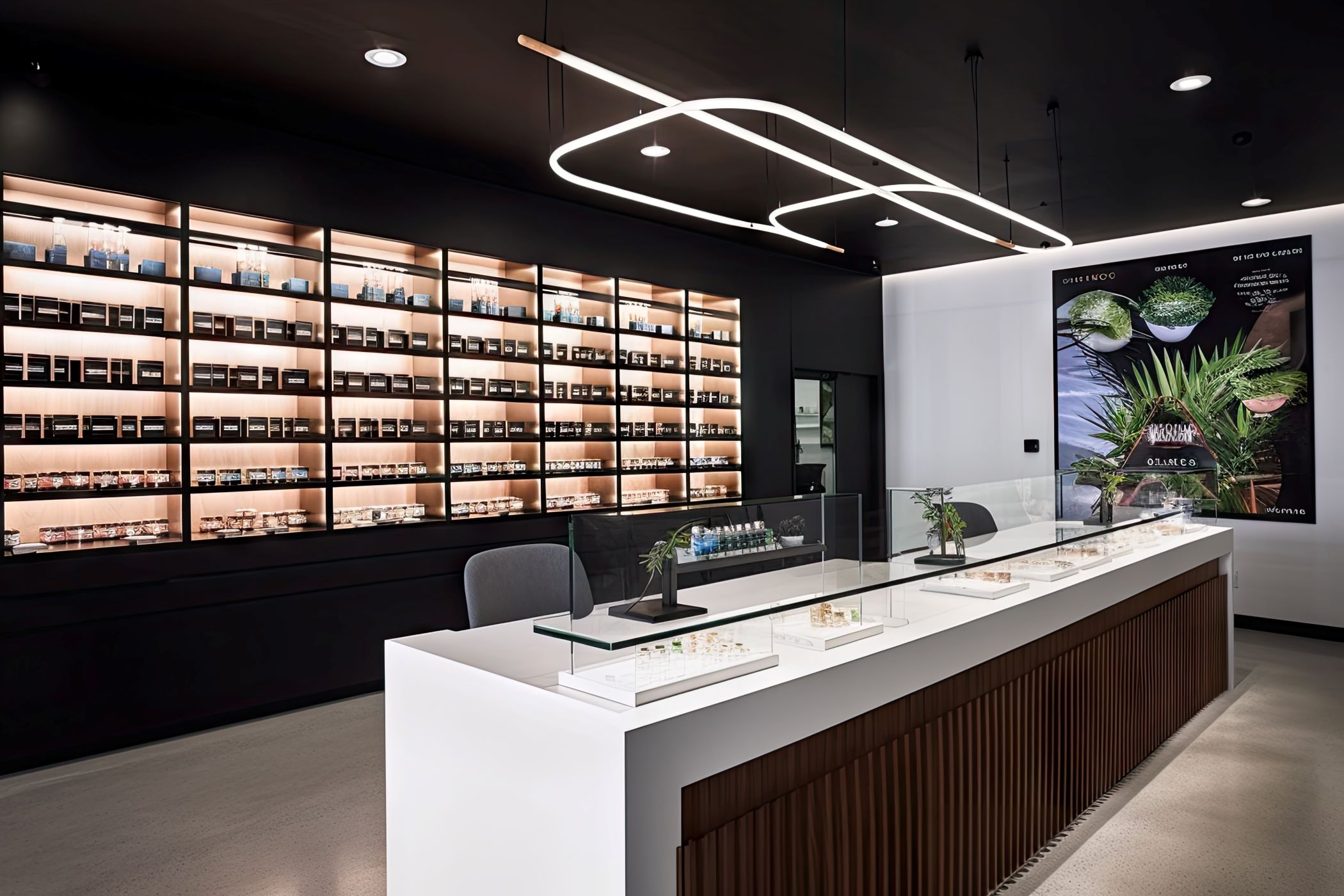Cannabis facilities are a high value target for criminal activity, not because of what they sell or who they sell it to, but because they offer a highly valued commodity that can’t be traced and often have large sums of cash on premise. What’s more, roughly 90% of financial and product loss in the marijuana industry can be chalked up to employee theft. This presents the obvious need for a strict cannabis security plan focused on securing entry/egress points and back areas where cash is handled.
The most pervasive physical security solution is to keep cannabis facilities, products, and cash locked down using an access control system as the first line of defense. But not all access control systems are created equal.
Only a door interlock system can do what traditional physical access control systems (PACS) cannot to protect cannabis profits, people, and product. In this blog we will answer the who, what, when, where, why, and how of door interlock systems for a better understanding of their importance when it comes to maintaining cannabis security.
Who: Cannabis Facility Owners and Managers
While the execution of a cannabis security plan can be outsourced to a cannabis security company or cannabis security consultant, the ultimate responsibility of cannabis facility security lies with the facility owner. After all, failure to comply with cannabis security regulations come with high costs ranging from costly fines to loss of license. Cannabis security managers are also the ones charged with ensuring all cannabis security operations comply with local and state standards. This includes working with trusted vendors to create a strong physical security plan that keeps people and product safe.
By understanding the important role door interlock systems play in a comprehensive cannabis security plan, cannabis facility owners and mangers are in a better position to carry out their respective duties.
What: Programmable Door Interlock Systems
Perhaps the most essential aspect of cannabis business operations is also the most precarious – customer interaction and access to product/cash storage areas. This earmarks access control as a primary priority when implementing physical security measures. Fortunately, there is more door technology on the market today than ever before, including advanced programmable door interlock systems (often called mantraps), which provide very high levels of security. Door interlock systems provide cannabis facilities with a unique form of protection for both customers and employees that is not afforded by conventional access control systems.
In its simplest form, a door interlock system is composed of two doors electronically connected so one cannot open until the other has closed. For cannabis facilities, a mantrap provides highly controlled access to an interior vestibule, where customers and/or employees can be screened automatically or by a security guard before entering the facility. Access is only allowed when the exterior door is closed, preventing tailgating of unauthorized individuals.
When: 24/7/365
The best cannabis security system is one that works around the clock with minimal to no oversight. Door interlock systems are no different and are available with various modes of functionality for complete customization based on time, staffing restrictions, and more. For example, cannabis facilities with a high amount of pedestrian traffic in the morning and late afternoon may want two doors operating during these time periods with the ability to switch to a single door utilizing a key switch during midday or evening hours. Intercom systems can also be added to door interlock systems to allow communications between the individuals inside the “mantrap” and a facility greeter or security guard controlling the system. This kind of setup is especially ideal for securing cannabis dispensaries that need to safeguard against underage access.
In an emergency, the door interlock system also must enable people to evacuate the facility. For example, if the power fails, an emergency override would ensure that the door can be opened manually. Moreover, safety codes may require that the door interlock systems be integrated with the facility’s fire alarm control panel to allow emergency door release. A local emergency pull station may also be required to allow doors to be unlocked in non-fire alarm emergencies or to interface the system with NFPA 101 delayed egress controls. In every case, local compliance mandates must be carefully adhered to when designing a door interlock system for your facility.
Where: Interior and Exterior Access Points
The great thing about door interlock systems is that they are completely customizable based on the facility’s layout and specific needs. For retail locations, a secure entry vestibule solution may be employed. When individual(s) in the interlocked area are approved, the outer door remains locked utilizing an electromagnetic lock or electric strike and the individuals can proceed through the inner door. Conversely, if an individual is deemed suspicious or otherwise unfit for entry, an alert can be sounded, and the inner door will remain locked and the outer door will unlock allowing the potential threat to exit the building. This effectively prevents potential problems from escalating inside the facility.
A Secure Entry Vestibule is also an effective solution for employee entrances. An electronic access system controls entry from the outside into the mantrap. Unlocking the entry door will lock the interior door of the Secure Entry Vestibule. Once the exterior door is re-secured, the interior door is unlocked to allow access into the facility. Any number of locking and unlocking configurations can be deployed to best accommodate employee traffic flow using a programmable door interlock controller.
The highest level of security is provided with a Restricted Entry & Exit System, where all doors are normally locked, a door is unlocked by a request for access only if no other related doors are unsecured. Opening any one door keeps all other related doors locked. Restricted Entry & Exit Systems will buffer simultaneous requests for access to prevent two or more doors from being unlocked at the same time. Traffic lights are often utilized to signal when a door is locked or unlocked. This door interlock system configuration is most appropriate for securing the interior of cannabis facilities where inventory is stored and cash areas are located.
When it comes to securing cannabis distribution facilities, sally ports can be deployed to control vehicular entry/egress using any combination of overhead doors, gates, or bollards.
Why: To Protect Product, People, and Profits
Maintaining compliance with local and national cannabis regulations are a huge part of cannabis security. And while video surveillance and access control systems may be required under law to safeguard a cannabis facility, these solutions do little to proactively deter and prevent crime.
A door interlock system provides proven protection from the cannabis industry’s most common risks: burglary, break-ins, underage entry, employee theft, and more. Use door interlock systems in tandem with traditional access control systems in areas where additional security is required. When coupled with access control, surveillance, and other security solutions, door interlock systems provide a high-tech gauntlet that is difficult for any security offender to overcome. These systems are easy to install and make use of existing door infrastructure to ensure physical security measures are consistently enforced.
How: Dortronics Door Interlock Systems
Working with a reputable manufacturer and system installer ensures you will get the ease of operation and specific door interlock capabilities and compliance you need, along with high-quality customer support and service. As a leading designer and manufacturer of electronic locking solutions proudly made in the U.S.A., Dortronics experienced team can provide personal assistance to help you design the door interlock system that best meets your specific needs.
Contact us today to get started!


